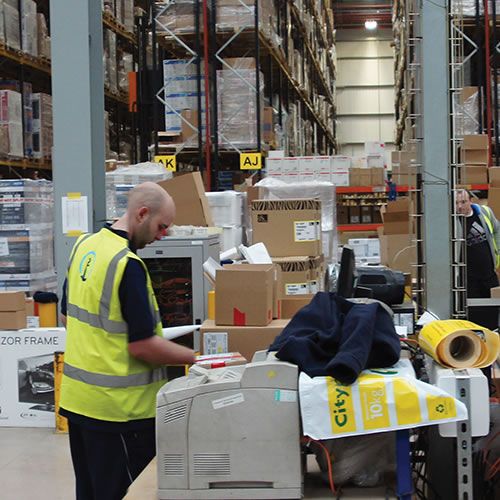Retailers who are making the most of the boost in sales created by Black Friday must make sure that their order processing and fulfilment strategies are up to handling the increased volumes, says Justin Opie, managing director of IMRG…
Black Friday can be a divisive topic – some like it, while others are a bit less enthusiastic. Yet all indicators point towards it not only being here to stay, but probably becoming an even bigger deal this year.
Black Friday was not a new concept in the UK last year – it had been gradually gathering momentum for several years. The difference in 2014 was the heavy media focus that served to prime people for shopping during that period. This resulted in a huge compression of orders into a very short time frame, triggering an online retail ‘delivery tsunami’ with orders 30 per cent higher than forecast – during a weekend of the year when order volumes are already far higher than normal.
This heavily impacted carrier and retailer fulfilment operations for days afterwards. Another factor that had a big impact on fulfilment was an upturn in two-man delivery volumes, thanks to the high numbers of electrical products selling at heavily discounted rates. This meant that carriers found themselves having to deal with far more bulky or signed-for deliveries than anticipated.
Black Friday has been a key focus for IMRG in 2015 and we have outlined a series of recommendations for managing the peak in 2015. Below we share some of our findings.
Spread the load
Black Friday will be a major event again in 2015 – though the exact form it takes may alter. Many retailers have already signified that they will run campaigns for different durations. For example – a few hours, days or even weeks. There are certainly no hard rules as to when campaigns need to start and end, and spreading out the peak across a longer period will be key to alleviating the strain carriers experienced in 2014. An important factor will be communication of campaign information – with shoppers, but also between retailers and carriers, to enable accurate capacity forecasting.
Customer psychology
During peak discounting periods, customers become different people – put simply, they are more ‘game-ready’. While typical user journeys might include online browsing, in-store visits and multiple devices before a purchase decision is reached, during discount-heavy periods they can appear primed to secure some kind of one-off deal as quickly as possible. In order to cater for this shift in shopping behaviour, careful pre-planning and an agile approach may be required.
Discounts
An IMRG snapshot poll of 30 retailers run just after the Black Friday weekend last year found that those offering discounts saw an average sales uplift of 180 per cent – but even those who didn’t still saw an uplift of 24 per cent. These are impressive figures, but in many cases the discount rates used to achieve them were very high and margins were impacted heavily. The electricals sector has also had a challenging time after it – during Q1 sales growth flat-lined – compared with the 15 per cent growth recorded during the same period in 2014, as it has struggled to recover from the huge spike over the Black Friday weekend. Discount rates will need to be rationalised this year – to find the balance between giving customers a good experience and ensuring margins are protected.
An agile strategy
There is, of course, a further question around what items of stock you actually choose to discount. Some simply shifted sale stock forward from January, rather than discounting full-price Christmas stock. The effect of this was evident in our index, where January sales growth for the electronics sector fell nine per cent year on year. To put that in perspective, in January 2014 sales for this sector were up 1 8.5 per cent. The peak period was slow to start last year, as shoppers held out for the Black Friday deals. This led to some panic discounting, which retailers will be keen to avoid this year. Having an agile strategy in place to enable changes to be made in line with developments – and what other retailers are doing – will ensure you can adapt quickly and as required without feeling pressured into further discounting as your only option.
Don’t forget
- You will likely experience an upturn in traffic, so ensure that your site is optimised accordingly, such as using lower-resolution images to boost page loading speeds.
- If bottlenecks occur – some of which may be beyond your control – this can create severe pressure from customers unsure of where their orders are. Enabling customers to track their orders in transit, will give them a greater sense of control over how their orders are progressing.
- Honesty around order lead times will decrease the likelihood of customers becoming frustrated should delays occur. Remember that Black Friday is a whole month before Christmas – so longer lead-times are less of an issue. But if you do change your normal delivery promise, be sure to tell them in advance.



